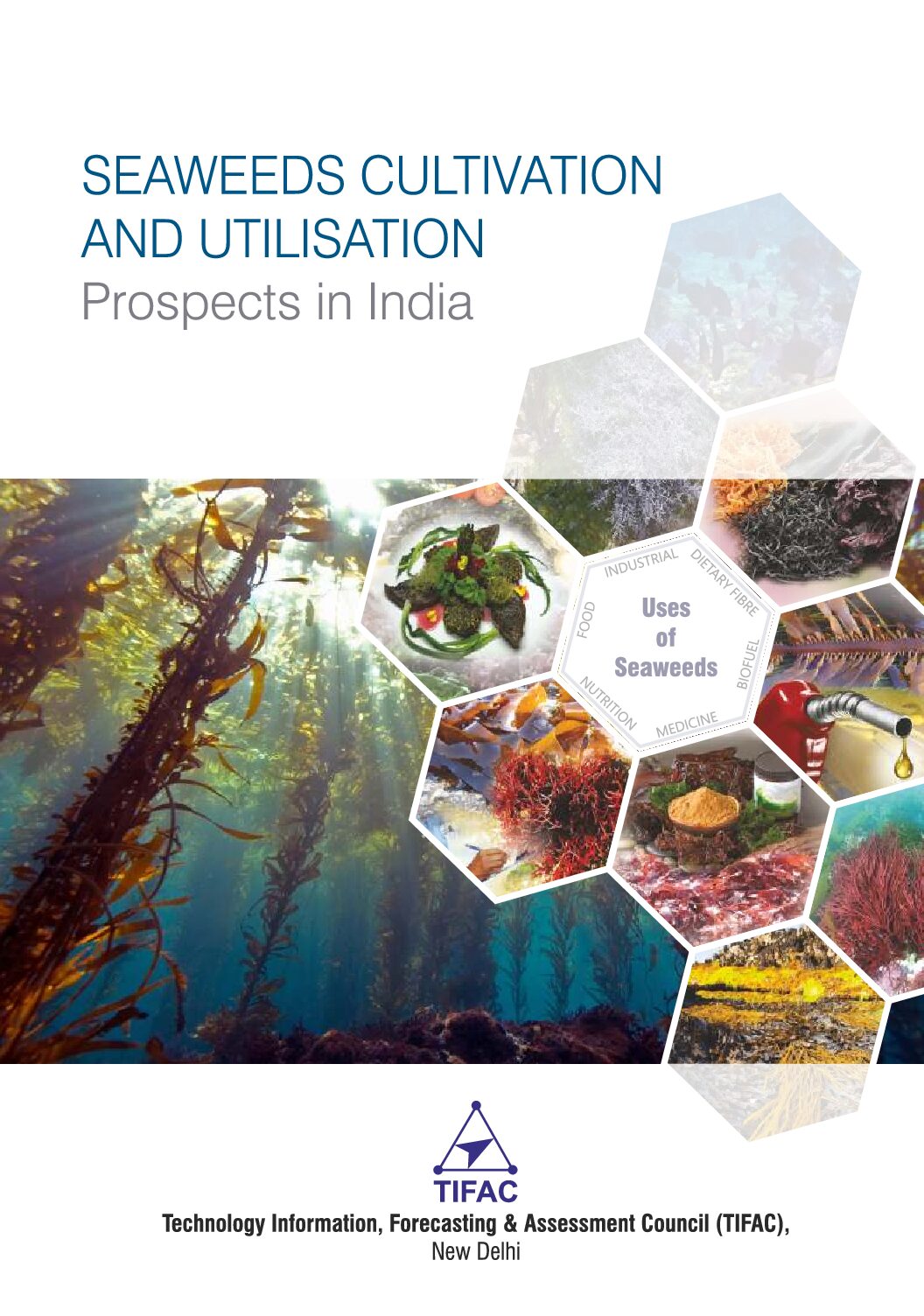Description
By 2050, India likely to emerge as the highest populated country in the world with more than 1.7 billion people. In order to keep pace with the growing population demands, India needs to substantially increase its food and energy production to sustain the momentum gained in economic progress in recent times. The traditional agriculture is at its maximum and is less likely to fill the gap between production and demand. Further, the farmlands will also be put to more lucrative uses and diverted for building townships, industrial corridors, commercial establishments and other infrastructural facilities. Further, the global warming and climatic change, dwindling water resources, erratic climatic conditions are less likely to help increase the agricultural productivity. In order to overcoming this burgeoning problem, the untapped vast ocean resources have to be explored for food and energy production while continuing the expansion of terrestrial farming employing both scientific and technical innovations. Therefore, farming in oceans remains the ultimate choice of expandable source of farming for securing the
future needs of food, chemicals and energy.
Seaweeds are extensively farmed and traded in several Southeast Asian countries. The global production of seaweeds in 2015 has been estimated at 29.4 million wet tons (27.7% of total aquaculture produce) with a market value over 4.8 billion USD (FAO Aquaculture News Letter April 2017). Most of the seaweed production is happening in Asian countries predominantly in China, Japan, Korea, Indonesia, Philippines, Malaysia and Vietnam. At present, seaweed farming is encouraged in several developing nations with growing economies to further accelerate the economic prosperity of rural coastal communities. Taking into consideration of past decadal growth rate (doubling per decade), seaweed production by 2100 projected to reach at 8 billion ton (fresh weight).
India has a coastline of more than 7500 km long and an exclusive economic zone (EEZ) of 2.172 million km2 – equals to 66% of that of the mainland area. This area potentially provides substantial arable space for farming seaweeds which are largely remained as underutilized resource. Seaweeds are exceptionally diverse in their form, function and composition, and therefore offer a very unique opportunity for their use in food, feed, hydrocolloid, fertilizer, cosmetics, pharmaceutical, nutraceuticals, biofuel and agro-based industries. Ubiquitous occurrence, abundant availability, higher productivity, higher carbon sequestration potential and ease of farming are some important features that merit their consideration for large scale farming for commercial utilisation. Further, seaweed farming being in the sea, it doesn’t compete with terrestrial agriculture for land, water and other agriculture inputs (fertilizer and pesticides).
Unlike other Asian countries, seaweeds in India are utilized for the production of typical phycocolloids such as agar and alginates by domestic industry from the raw material harvested from natural beds, particularly from southeast coast of Tamil Nadu. There are more than 2000 households, particularly the womenfolk, traditionally engaged in seaweed collection from natural beds along the Gulf of Mannar coast, Tamil Nadu. The annual market value of such seaweeds collected from natural sources is estimated at ` 25 crores. Likewise, there are 32 MSMEs in the country using the seaweeds for production of phycocolloids. Therefore, seaweed collection from natural sources has not only become a source of raw material supply for local seaweed industry but also forms an important activity providing an additional income for the rural coastal communities.
There exists a potential opportunity for India to emerge as a global leader in seaweed production, utilisation and trade provided a roadmap with policy framework developed to promote this sector that has been ignored for a quite long time. The present report gives a brief background of seaweeds and their distribution, production, markets, utilisation at both international and national level. A special emphasis made to propose a separate “Seaweed Development Board” for nurturing and boosting this sector at par with agriculture in the country.





Reviews
There are no reviews yet.